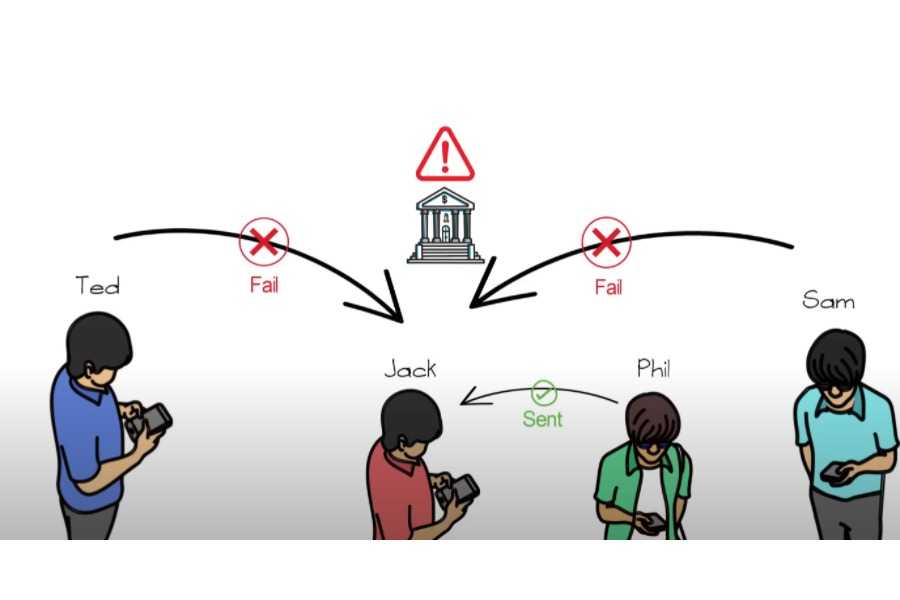
What Does Blockchain Code Look Like

Table Of Contents
Blockchain technology is not just a buzzword; it’s a revolutionary technology that�’s transforming the way we conduct transactions and manage data. It’s the backbone of cryptocurrencies like Bitcoin and Ethereum, but its potential applications extend far beyond digital currencies.
From streamlining supply chain management to securing voting systems, blockchain technology is poised to disrupt numerous industries.
This guide is designed to help both beginners and experienced developers understand blockchain and how to start their journey in blockchain development.
Demystifying Blockchain Technology

At its core, blockchain is a decentralized and distributed digital ledger that securely records transactions across multiple computers. The technology ensures that each digital transaction is secure, transparent, and resistant to modification. Blockchain allows users to verify and audit transactions independently, eliminating the need for intermediaries like banks.
To illustrate, imagine a scenario where four friends, Jack, Ted, Sam, and Phil, meet up for dinner. Jack pays the bill, and they all agree to split the expense amongst each other. The next day, Phil, Ted, and Sam send their shares to Jack via online money transfer. However, due to technical issues at the bank, Ted and Sam�’s transactions fail. This is where blockchain comes in.

Instead of relying on a bank, the friends could use a cryptocurrency like Bitcoin, which operates on blockchain technology. Each friend has a certain number of Bitcoins, and when they send their shares to Jack, a record of the transaction is created in the form of a block. This block contains the transaction details and the number of Bitcoins each friend owns. As more transactions occur, more blocks are added, creating a chain of records or blocks, hence the term “blockchain.”
Blockchain’s transparency and security are its key strengths. Each friend has a copy of the ledger, making it clear how many Bitcoins each person has. If Phil tries to send more Bitcoins than he has, the transaction will be flagged as invalid. Furthermore, the data within the blocks are encrypted by complex algorithms, making it nearly impossible for hackers to alter the data.
The Value of Learning Blockchain Development

Blockchain development is one of the most sought-after skills in today’s tech industry. With the rise of cryptocurrencies and the potential applications of blockchain technology in various sectors, there’s a growing demand for professionals who can develop and implement blockchain solutions.
As a blockchain developer, you could work on creating new cryptocurrencies, developing smart contracts, or building decentralized applications (dApps). The possibilities are vast, and the potential for innovation is enormous.
Moreover, blockchain development can be a lucrative career. According to Glassdoor, the average salary for a blockchain developer in the United States is over $100,000 per year, with some experienced developers earning much more.
Kickstarting Your Blockchain Development Journey

Starting your journey in blockchain development involves several steps. First, you need to understand the basics of blockchain technology. There are numerous online resources, including courses, tutorials, and articles, that can help you grasp the fundamentals of blockchain.
Next, you should learn a programming language. Solidity, the primary language for developing smart contracts on the Ethereum blockchain, is a good place to start. It’s beginner-friendly and widely used in the blockchain development community.
Once you’ve got a handle on Solidity, you can start building your own smart contracts and dApps. This is where the real learning happens. By working on projects, you’ll gain practical experience and learn how to solve real-world problems with blockchain technology.
Here’s a step-by-step guide on how to start your journey in blockchain development:
Learn about blockchain technology: Understand the basics of blockchain technology and how it works. You can use online resources, books, or courses to learn about blockchain.
Learn a programming language: Start with Solidity, the primary language for developing smart contracts on the Ethereum blockchain. It’s beginner-friendly and widely used in the blockchain development community.
Work on projects: Apply what you’ve learned by working on blockchain projects. This could be creating your own cryptocurrency, developing a smart contract, or building a dApp. This will give you practical experience and help you understand how to solve real-world problems with blockchain technology.
Join the community: Participate in blockchain communities and forums. This will give you a chance to learn from others, ask questions, and get feedback on your work.
Keep learning: Blockchain technology is constantly evolving. Stay updated with the latest trends and developments in the blockchain space.
Remember, the key to learning blockchain development is to learn by doing. Start with a simple project, gradually take on more complex projects, and never stop learning.
Blockchain in the Real World
class Blockchain:def __init__(self):self.current_transactions = []self.chain = []self.nodes = set()# Create the genesis blockself.new_block(previous_hash='1', proof=100)def register_node(self, address):"""Add a new node to the list of nodes:param address: Address of node. Eg. 'http://192.168.0.5:5000'"""parsed_url = urlparse(address)if parsed_url.netloc:self.nodes.add(parsed_url.netloc)elif parsed_url.path:self.nodes.add(parsed_url.path)else:raise ValueError('Invalid URL')def new_block(self, proof, previous_hash):block = {'index': len(self.chain) + 1,'timestamp': time(),'transactions': self.current_transactions,'proof': proof,'previous_hash': previous_hash or self.hash(self.chain[-1]),}self.current_transactions = []self.chain.append(block)return block...
A simple Blockchain in Python can be found here
Blockchain technology is not just about cryptocurrencies. It has numerous potential applications in various sectors. For instance, Walmart uses blockchain technology to improve its supply chain management.
With blockchain, the quality of goods at each step of the supply chain is permanently inscribed within a block. This allows Walmart to identify where a product got damaged in the supply chain, helping them fix the problem areas.
Blockchain technology can also be used in voting systems to make the process more secure, transparent, and efficient. It can be used in healthcare for secure and efficient patient data management. In the financial sector, blockchain can simplify transactions and reduce fraud.
The possibilities are endless, and as a blockchain developer, you could be at the forefront of this technological revolution.
Wrapping Up

Blockchain technology is revolutionizing the way we conduct transactions and manage data. As a blockchain developer, you have the opportunity to be part of this exciting field. Start your journey in blockchain development today and unlock a world of opportunities.
Remember, the key to learning blockchain development is to learn by doing. Start with a simple project, gradually take on more complex projects, and never stop learning. Your journey into the world of blockchain development promises to be an exciting one. Happy coding!
Share
Related Posts




Quick Links
Legal Stuff

